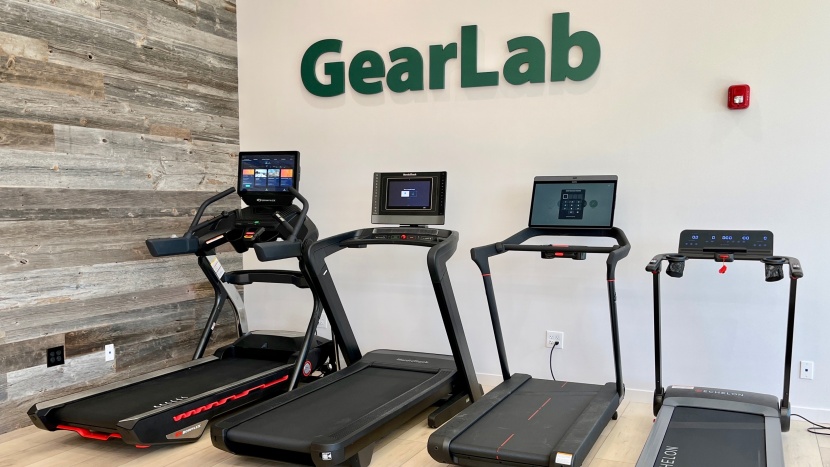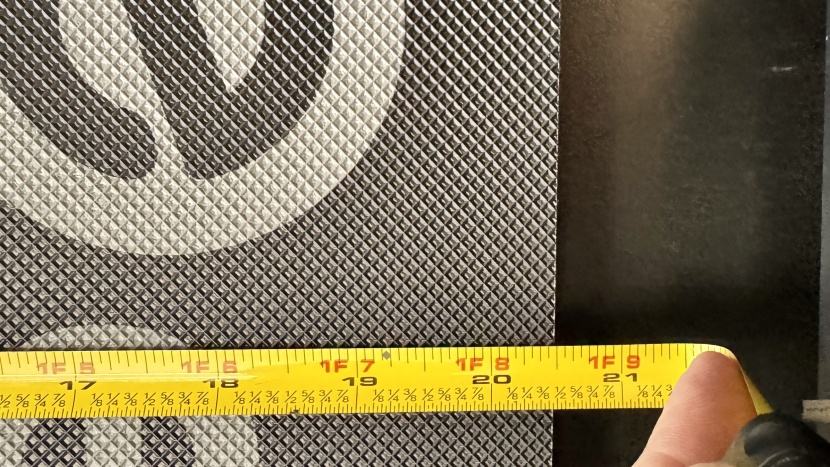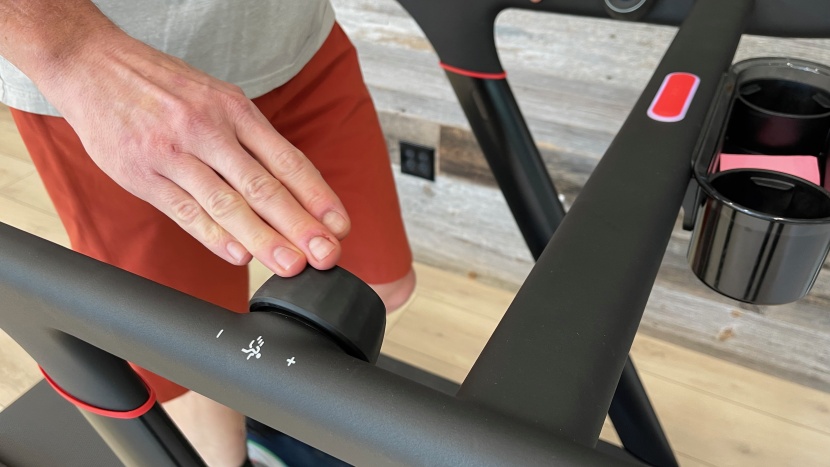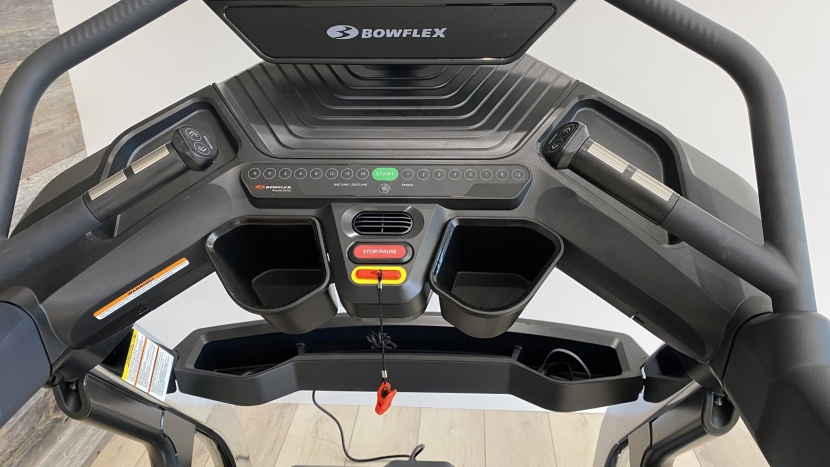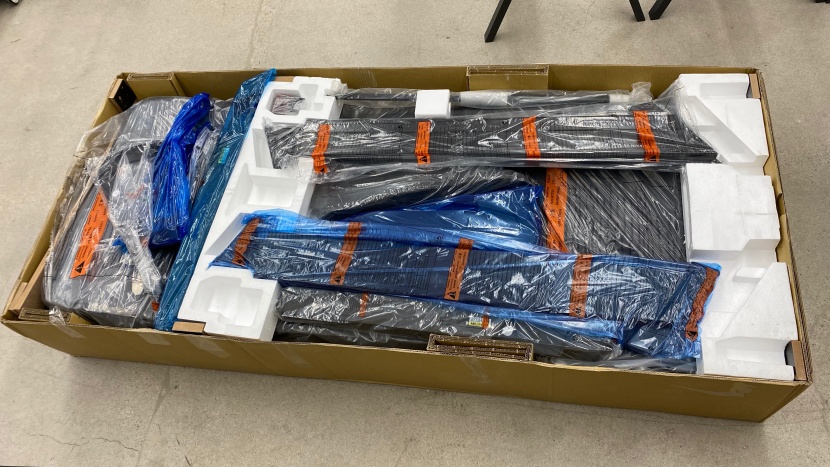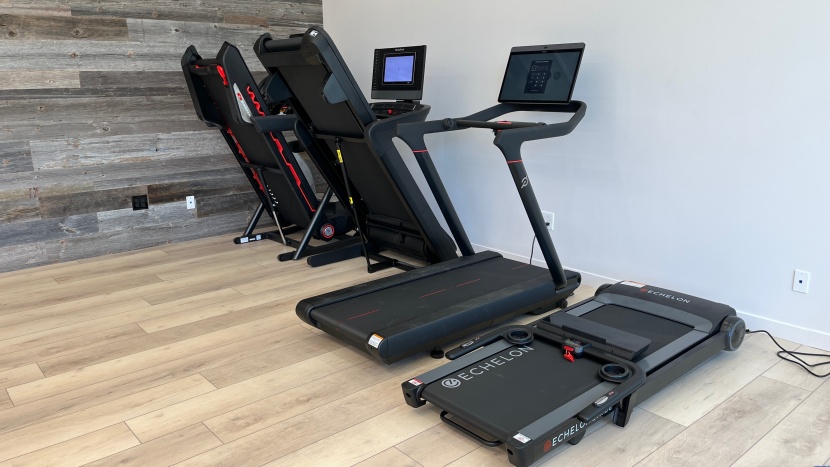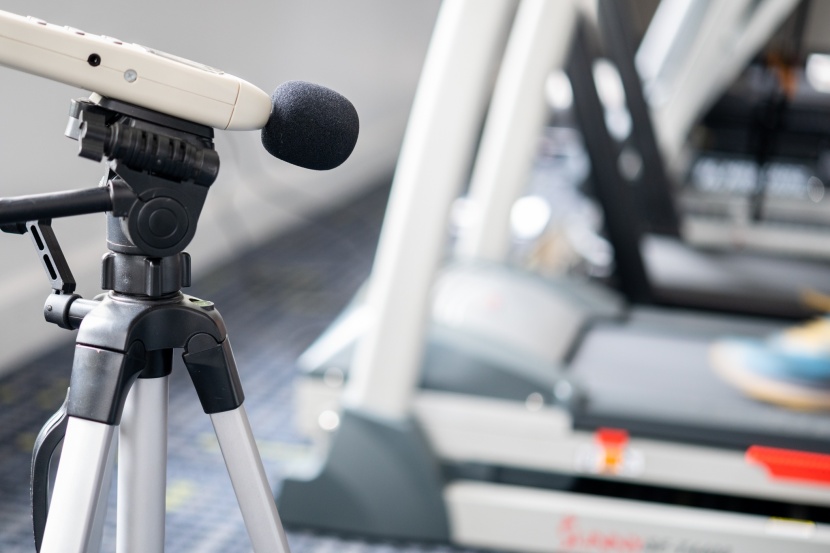Exercise Quality
A treadmill's primary function is to provide a quality running or walking workout, so we prioritized the exercise quality metric by giving it the highest weightage of 35% in the overall score. While every treadmill will provide some exercise, various factors and characteristics differentiate their performance. Among these factors, the size of the tread/running surface is one of the most significant. Generally speaking, a larger surface area is better, so we measured the usable running surface of each model to compare to the manufacturer's specifications; they don't always advertise the actual size. Smaller decks and belts are fine for walking workouts, but as your speed increases, you'll need a bit more space to stride. We measure the usable width, if you feel nervous about accidentally kicking a side it will affect the quality of your workout. We conducted side-by-side tests to compare their deck cushioning systems and assess how well each model absorbed impact. While our testers provide excellent feedback and adjectives about the level of cushion, this is a nuanced performance aspect. To measure the actual deck flex of each treadmill, we built a custom testing jig that supports each machine while exerting pressure in the center of the running surface. This jig holds a digital force meter that records the amount of pressure required to flex each deck 12mm. The digital force meter records and logs data, giving us a pound-foot measurement that can be directly compared to other machines. This testing pushes beyond the feedback of professional runners and gives us hard data to evaluate these machines.
The range of speed is another important factor to consider when buying a treadmill. While not everyone may need or want a treadmill that can handle speeds up to 12 mph, having the option may be beneficial. Walkers may require a lower-speed treadmill with small speed adjustments for walking. Serious runners, or those with serious running aspirations, will need higher speeds for higher-intensity training. We considered the manufacturer's claimed speed range, but we also tested each model by running on it at the full range of speeds and testing their limits. Additionally, we conducted a speed-accuracy test on each machine. By using a rolling measuring wheel on the belt for sixty seconds, we can deduce how accurate each machine's speed sensor is. At 5280 feet per mile, a perfect reading would be 528 feet. We noted the difference between our measurement and the perfect reading and calculated that as a percentage. Although none of the models were perfect, some were incredibly close, this can be very important to competitive runners who may rely on the treadmill's data for training purposes.
We evaluated the motors and didn't take the manufacturer's word for the power rating of each motor. Each treadmill was disassembled to inspect the motor, its housing, and whether or not it used a flywheel. Weighted flywheels can give a more natural feel to the belt moving beneath your feet. We looked at each machine's incline adjustability and then we measured it, you'll notice that the incline data we publish varies from that on the manufacturer's websites. There are some sneaky ways that data is presented; a treadmill with an Incline from 0-15 settings or positions is not the same as a treadmill with 0-15 degrees of incline. We give you our measured data so you can compare the treadmills' actual capabilities. Some of the models we test feature a decline function, this can be a helpful training tool for trail runners but has limited usefulness for many other users. According to our team Physical Therapist and owner of PT Revolution, Ian Anderson, “Increasing the incline simulates hill climbing, targets different muscle groups, changes your gait, and burns more calories.”
Connectivity and Companion App
Many modern exercise machines now come with connectivity options and training apps. For some people, the experience provided by an app might be more important than the equipment itself. Although highly motivated individuals may not require any apps for their training, many people love the entertainment, motivation, and guidance these apps and trainers offer. Some models have fancy integrated touchscreens that use WiFi to connect to their respective apps, while others rely on Bluetooth to connect to an app through your tablet or smartphone. Although all the connected models we tested can be used without their apps, most of them provide a much better and more engaging experience when used with them.
We bought app memberships and used free trials to explore the various platforms and all they have to offer. We used Peloton, Echelon, iFit, JRNY, and Zwift. We scrolled through myriad options and tried countless different classes and videos to see how they compare. We examined the features, variety, and quality of each app and settled on our favorites. Of course, your preferences may be different, so the apps themselves have little bearing on any model's overall score. We also took the time to connect Bluetooth accessories like headphones and heart rate monitors to each model when applicable.
User Interface/Ease of Use
How we interact with the machine is referred to as the user interface, which affects the ease of use of each model. Nowadays, many high-end models are equipped with advanced touchscreens that act as the primary interface for selecting workout programs from apps and viewing them while working out. Less expensive treadmills often have somewhat less sophisticated consoles with digital displays, buttons, and other features. Many models also have controls that are conveniently located for easy access while running. The screens, displays, and controls vary widely among the models we tested. This metric accounts for 25% of the overall score.
During our review process, we compared the screen-equipped models side by side and performed individual test workouts. We evaluated the screen's resolution, color, brightness, and touch sensitivity. Additionally, we tested the speakers to assess their sound quality. Throughout our workouts, we varied the speed and incline regularly to evaluate the ergonomics of each model's controls. The Sole F80 surprised us with how slow its incline adjustments were.
Likewise, for the non-screen-equipped models, we considered the size, readability, and information provided on the digital displays. We used all the controls to evaluate their ergonomics and connected other devices and apps when applicable. All these considerations gave us great insight into each model's user interface and its overall ease of use.
Features
Most treadmills come equipped with a variety of features, ranging from basic conveniences such as water bottle holders to advanced luxuries like swiveling touchscreens and app compatibility. The quality and usefulness of these features, as well as their overall impact on the user's convenience and exercise experience, are taken into account when evaluating each model's 15% overall score. While some models offer all the bells and whistles, others are more basic. Therefore, it's not just the number of important features but also their quality and usefulness.
Ease of Assembly
Most treadmills are shipped in a large, heavy box, and some assembly is required to get them up and running. A couple of the models we tested come pretty much ready to go, but most require a bit of time and effort to get ready for use. To test this, we assembled each model ourselves (except for the Peloton) to get a feel for the relative difficulty and time required to complete the process. Ease of assembly accounts for 10% of the overall score. Treadmills like the NordicTrack X16 aren't exceptionally difficult to assemble but weigh in excess of 400 pounds.
Storability
Depending on how much space can be devoted to a home gym, storage may or may not be of great importance. Most treadmills are large machines that take up quite a bit of space, even if you have a dedicated workout room. Nearly every model we tested has some folding feature to reduce its overall size when not in use, and some make storability a priority in their design. We measured the dimensions of each model in both its open and folded positions for comparison to each other and the manufacturer's claims. We also note the claimed weights of the treadmills, as our scales couldn't accommodate the largest models we tested. Most treadmills have wheels integrated into their design to move them around on firm and flat surfaces, and we moved each model several times to see how easy it was. Storability is 10% of the overall score.
Noise Level
To analyze and compare the noise level of each treadmill, we used a sound level meter to record the decibel level at varying speeds. We positioned the meter 24 inches above the floor and diagonally 18 inches from the motor next to the tread deck. We recorded the decibel readings at 1, 4, and 7.5 mph with just the belt running independently and a tester walking or running. Since all treadmills make some noise and the differences are relatively minor, the results from this test metric hold a 5% weighting of a product's overall score.
Conclusion
When looking for the perfect treadmill, there are many factors to take into consideration. Our team of experts uses a rigorous process to compare and test various models, identifying their important performance differences. Our goal is to provide you with the information you need to make an informed purchase decision.

